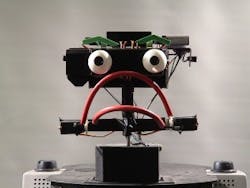ERWIN (Emotional robot with intelligent network) is a robot developed by researchers from the University of Lincoln’s School of Computer Science.
The robot is being used as part of a PhD study to learn more information about the relationships between humans and “companion” robots. Specifically, Dr. John Murray wants to see how the robot’s reactions and characters affect people. In addition to this, however, Murray wants to learn more about how relationships are formed by children with autism, Asperger syndrome, or attachment disorder.
Humanoid and/or companion robots are nothing new. Whether we are talking about robotic pet dogs or fish, humanoid automation robots, companion robots for older adults, or even robots that have a laugh at the expense of the audience, such robots have been in existence for some time now.
In this particular project however, the motive is entirely different. PhD student Mrigank Biswas says that the team will introduce "characteristics" and "personalities" into the robot, which will enable it to have "cognitive biases" and make the robot become imperfect by nature, which in and of itself, makes it "human-like." Companion robots need to be friendly and recognize its user’s emotions and needs, and to act accordingly. So these robots are being designed to form a "long-term" relationship with its users, which will be made possible by continuous and ongoing interactions.
This will happen as a result of the scientists collating data from the robot’s interactions, while also employing a humanoid robot called "Keepon," a small yellow robot designed to study social development by interacting with children. The non-emotive Keepon will be used to study the different reactions folks have with it compared to ERWIN, in hopes of discerning which is most effective in engagement with users.
The motive behind the development of both robots certainly comes with good intentions, and for that, I hope both provide the teams with relevant data and insight. But when it comes to the idea of companion robots for older adults, am I the only one who finds the concept to be a bit sad? Maybe I am looking at it wrong, but I am picturing myself as a lonely old octogenarian with nothing or nobody else but a robot to keep me company. But hey, at least you don’t have to clean up after a robot.
About the Author

James Carroll
Former VSD Editor James Carroll joined the team 2013. Carroll covered machine vision and imaging from numerous angles, including application stories, industry news, market updates, and new products. In addition to writing and editing articles, Carroll managed the Innovators Awards program and webcasts.
